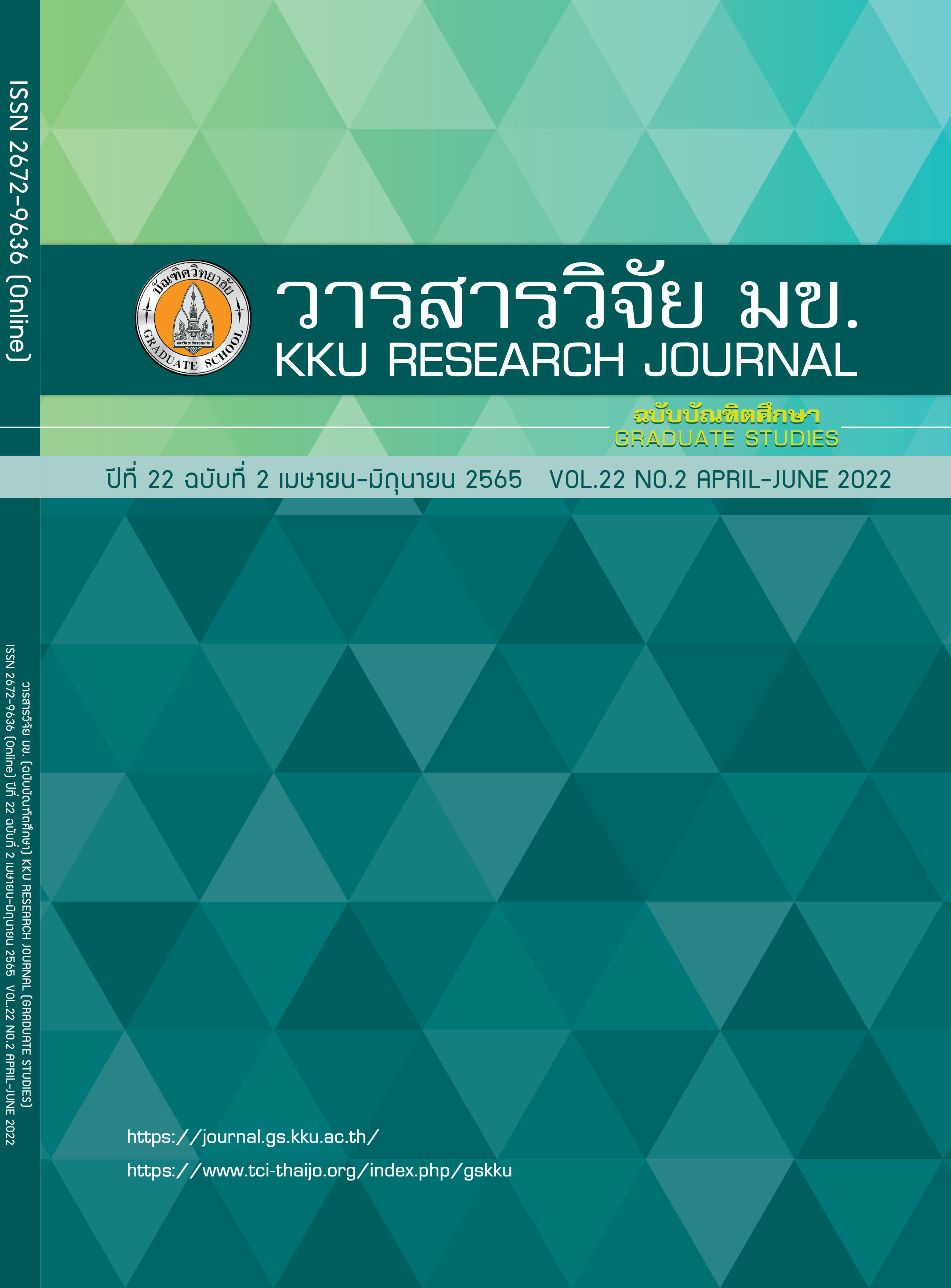Ammonium and Orthophosphate Adsorption Efficiency of Coffee Ground and Coffee Ground Charcoal
Keywords:
Ammonium, Orthophosphate, Coffee GroundAbstract
The efficiency of coffee ground waste as biosorbent for ammonium and orthophosphate removal in solution was studied. The adsorption study was performed in batch method at different 3 types of adsorbents: Coffee Ground (CG), Coffee Ground Charcoal (CGC), and activated coffee ground charcoal by H3PO4 (P-CGC). At the optimum condition of each adsorbent, it was found that pH 7, initial concentration of 20.0 mg/L, adsorbent dose of 1.0 g. CG adsorption for ammonium and orthophosphate at a contact time of 1 and 30 min respectively, While CGC and P-CGC adsorption for ammonium and orthophosphate at a contact time of 60 min. The adsorption percentage of CG, CGC, and P-CGC for ammonium were 97.55±0.15, 98.47±0.08, and 98.32±0.08, respectively and orthophosphate were 95.64±0.07, 95.30±0.05, and 95.54±0.07 respectively. The kinetic experimental data of these 3 adsorbents can be described according to the Pseudo-second order model. The isotherm model which fits the experimental data was the Freundlich model. The results demonstrated the beneficial use of the coffee ground as potential ammonium and orthophosphate bio-adsorbent and could be used as soil amendment material.
References
Natthaphong T. Coffee grounds from coffee cups to circular economy concept for biological products. Environmental Journal [internet]. 2019 [cited 2020 Jan 4]; 23: 1-8. Available from: http://www.ej.eric.chula.ac.th/content/6109/66. Thai.
Krishna J. Comparative study of heavy metal adsorption from laboratory effluents of eggshell and coffee grounds together with a multi-layer filter system [internet]. 2014 [cited 2019 Dec 17]. Available from: https://research.rmutsb.ac.th/fullpaper/2559/2559240605189.pdf. Thai.
Xie Q, Qu S, Zhang Y, Zhao P. Nitrogen-enriched graphene-like carbon architecture with tunable porosity derived from coffee ground as high performance anodes for lithium ion batteries. Applied Surface Science. 2021; 537: 148092.
Theeradit P, Piyathida U. The removal of lead in industrial wastewater by using activated carbon from tamarind wood via H3PO4 activation. Journal of Science and Technology. 2017; 25: 191-209. Thai.
Saowapa W. Phosphate removal in wastewater by adsorption on calcium carbonate and calcium oxide from eggshell. The Journal of KMUTNB. 2559; 26:475-486. Thai.
Chaiyan C, Waraporn T, Pathumthip T. Influence of activating agent on functional group and adsorption efficiency of activated carbon derived from coffee residue [internet]. 2007 [cited 2019 Dec 22]. Available from: https://dspace.rmutk.ac.th/handle/123456789/1492. Thai.
Sasikorn S. Adsorption of volatile organic compounds (VOCs) in indoor environment using activated carbon produced from coffee bean residue [dissertation]. Bangkok: Chulalongkorn University; 2011. Thai.
Theeradit P. Activated carbon from agricultural residues by chemical activation for the application of pollutant removal in water. J. Res. Unit Sci. Technol. Environ. Learning. 2017; 8: 196-214. Thai.
Ma Z, Li Q, Yue Q, Gao B, Li W, Xu X, et al. Adsorption removal of ammonium and phosphate from water by fertilizer controlled release agent prepared from wheat straw. Chemical Engineering Journal. 2011; 171: 1209-1217.
Sopha R. Adsorption of ammonia from domestic wastewater phetchaburi municipal by using rice husk ash and commercial bituminous carbon [dissertation]. Bangkok: Kasetsart University; 2012. Thai.
Phatthakamon S. Phosphorus removal in surface water by activated carbon from water hyacinths [internet]. 2018 [cited 2020 Dec 15]. Available from: http://fulltext.rmu.ac.th/fulltext/2561/M126906/Somboot%20Pattakamol.pdf. Thai
Hu X, Zhang X, Ngo HH, Guo W, Wen H, Li C, et al. Comparison study on the ammonium adsorption of the biochars derived from different kinds of fruit peel. Science of The Total Environment. 2020; 707: 135544.
Kizito S, Luo H, Wu S, Ajmal Z, Lv T, Dong R. Phosphate recovery from liquid fraction of anaerobic digestate using four slow pyrolyzed biochars: Dynamics of adsorption, desorption and regeneration. Journal of Environmental Management. 2017; 201: 260-267.
Rawin S, Kowit P. Kinetic and thermodynamic adsorption of methylene blue by modified rice husk. The Journal of KMUTNB. 2011; 21: 337-348. Thai.
Jaturun A, Chanchanok S, Panomchai W, Kulyakorn K. Adsorption isotherm of acid dye by activated carbon prepared from spent coffee gounds. Feat Journal. 2017; 2: 115-124. Thai.
Downloads
Published
Issue
Section
License
Copyright (c) 2022 KKU Research Journal (Graduate Studies)

This work is licensed under a Creative Commons Attribution-NonCommercial-NoDerivatives 4.0 International License.



